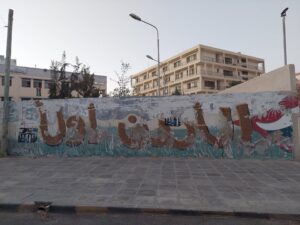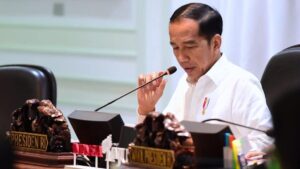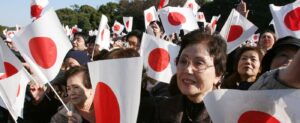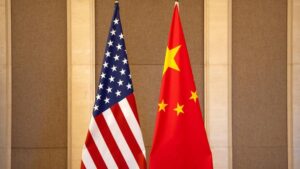Perils of Military Politicization and Police Militarization in Myanmar: Lessons Learned for Southeast Asia [English]
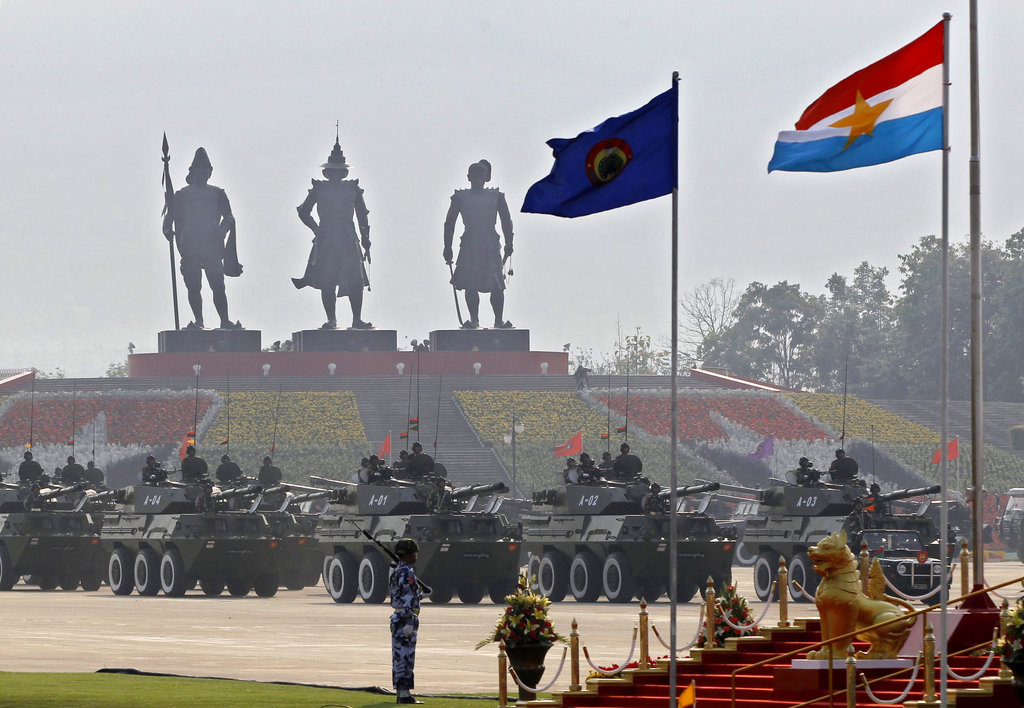
Myanmar's military parade. Photo: Nyein Chan Naing/European Pressphoto Agency
By the first week of March, the world is shocked by the death of a young lady named Kyal Sin, with the cause being a case of police brutality. Not long after, in the second week, news broke out that the police were shooting protesters; prompting nuns to protect the civilians. It was reported that the security forces (including the military) were using live ammunition to disperse protests all over the country.
To start with some context, such ‘police brutality’ is a follow-up from the recent military coup in Myanmar, where the Tatmadaw (Burmese Armed Forces) once again takes reign over the national political stage. As learned from Myanmar’s history since its independence, military rule always led to an Orwellian government.
Hence, with the current global trend tending to prefer democracy over authoritarianism, Myanmar could glide back into its darkest era, having to deal with numerous political and economic embargoes. Such tragedy, I believe, was caused by two important factors: the politicization of the Tatmadaw and the militarization of the Burmese police force; with the former being a cause for the latter.
The Politicization of the Military: Why is It a Bad Thing?
First of all, it is important to understand the division between the civil and the armed. In Samuel L. Huntington’s (2000) conception, the civil shall bear the ultimate political decision-making power in a country, with the military as their main instrument for defense against external threats. The military should not have any political power, as they hold the monopoly of violence.
In the early days of its independence, Myanmar was seen as a potential for a new economic power in Southeast Asia (Wong, 1997). However, merely fourteen years after that, the military (led by the notorious General Ne Win) took reign over the country. As stated by Dr. Vum Son (2014), it was the General’s ambition to become a prime minister that moved the military to end the civilian government; his proposal to become the Burmese PM was rejected by them.
The bell was rung when the Anti-Fascist People’s Freedom League/Union government was split. It also caused instabilities in the country, which was seen by some as a national security crisis. A desperate U Nu then instated Ne Win as an interim prime minister to ‘restore order’. He then took the opportunity to execute a ‘bloodless coup’, permanently banishing the civilian Union Government.
Then, we can see that the systematic politicization of the Tatmadaw was started by mostly the ambition of a single, high-ranking, military officer. The rest of it was almost fifty years of military rule, followed by isolationism and embargoes from the West.
Mainly it was the oppression that caused concerns for the democratic countries because as mentioned before, the military now bears the monopoly of both violence and decision-making political power. Their culture was different from ours; rather than tending to be democratic, the military is known for their ‘command’ top-down culture, leaving almost no room for critics and opposition.
The Militarization of the Police: a Tool for the Junta
In my view, police militarization as a process and phenomenon encompasses two things, the first being the implementation of the aforementioned command culture and the second being the provision of heavy military-like equipment.
One famous case of such phenomenon happened in the United States, where officers often wear militaristic gear just to disperse protesters last year. A study done by Mosteller (2017) showed a trend of purchasing military-grade equipment by police forces in the US, which in turn caused a higher level of force against citizens. Meanwhile, in Southeast Asia, the Indonesian police force has been criticized for involving the military in law enforcing matters, such as health protocol enforcement and general patrolling. Although it is no longer a part of the armed forces, a close relationship like that is concerning as the police officers can be re-exposed to their previous command culture, as resembled in recent cases of the use of excessive force.
This phenomenon also happened to the Burmese police force, which we can see in the photos of protesters being beaten down and even shot with live ammunition by heavily armed police officers. Despite being initiated as an independent department under Ne Win’s rule, the Myanmar Police Force (MPF) was under the watch of the Burmese Ministry of Home Affairs. It was under the next military rule, the State Peace and Development Council (SPDC), that the MPF was taken under the care of the Tatmadaw. Effectively, the Burmese police were no longer purely civil, as they are still part of the Armed Forces until today.
Along with the militarization of the MPF, if we refer to Herbert L. Packer’s (1968) criminal justice concept, the one that is implemented in Myanmar is crime control. The consequence of such criminal justice system is that the legal technicalities that limit the police authority will often be ignored, as long as ‘justice’ prevails. The problem itself arises when justice in a country is being defined by a despotic leader; things like criticism and protests against the ruler can be seen as a ‘crime’.
Accordingly, the Burmese police force can be effectively seen as a tool for the junta; a gift from the previous military ruler, the SPDC. As long as the MPF is still a part of the Tatmadaw, things will remain mostly the same, where the police will do the dirty job against the rebelling civilians for the current military junta.
Lessons Learned for Southeast Asia
As we reach the end of this writing, we should be able to see some parallels between the case of Myanmar and other countries in Southeast Asia. Different from their Western counterparts, most of the Southeast Asian countries still have military participation in some aspects of civilian life.
First, it is important to keep the military under civilian government control, as it is preliminary to a healthy democratic society. Command culture is not compatible with the civilian’s (ideally) democratic culture, as the military sees it as a way to be efficient and effective. Other than that, the military should be given freedom in executing the civil government’s defense policies; this should be done with the agency-principal relations as a consideration.
Then, in no way should a civil government grant political positions to active military personnel. Such a decision can lead to further ambition from the military. It also will allow them to do a ‘bloodless coup’, like the one done by Ne Win. Furthermore, granting political positions to the retired military officers should be reconsidered (not out of consideration), as they will likely have the command culture way of thinking.
Last but not least, the police should be separated from the armed forces. Essentially, police forces are civilian by nature; they are being instated for law enforcement, not defensive reasons. Hence, the police shall not bear excessive weaponry to avoid police brutality on the citizens. Governments should also consider having a ‘due process’ approach to criminal justice.
Regarding what ASEAN can do to overcome the civilian hardship in Myanmar, I think that there’s not much that can be done by the organization. Rather than organizational statements and actions, democratic countries should apply pressure to the military junta in Myanmar. This can be done by either alienating their representatives in international organizations or by re-enacting past actions by the West: economic embargoes. The 2021 Myanmar coup should be viewed as a potential epidemic, as it can become an example and inspiration for others to dethrone civilian governments.
References
Huntington, S. L. (2000). The Soldier and the State. Harvard University Press.
Mosteller, J. (2017). Militarization of Police. Charles Koch Institute. https://www.charleskochinstitute.org/issue-areas/criminal-justice-policing-reform/militarization-of-police/
Packer, H. L. (1968). The Limits of the Criminal Sanction. Stanford University Press
Son, V. (2014). The Ne Win Doctrine: a Systematic Campaign of Hatred. Chin Human Rights Organization. https://www.chinhumanrights.org/the-ne-win-doctrine-a-systematic-campaign-of-hatred/
Wong, J. (1997). Why Has Myanmar not Developed Like East Asia? ASEAN Economic Bulletin, 13(3), 344-358. http://www.jstor.org/stable/25773443.
Januar Aditya Pratama is a Junior Year International Relations Student in Universitas Padjadjaran. And he can be on Instagram with username @jnraditya

